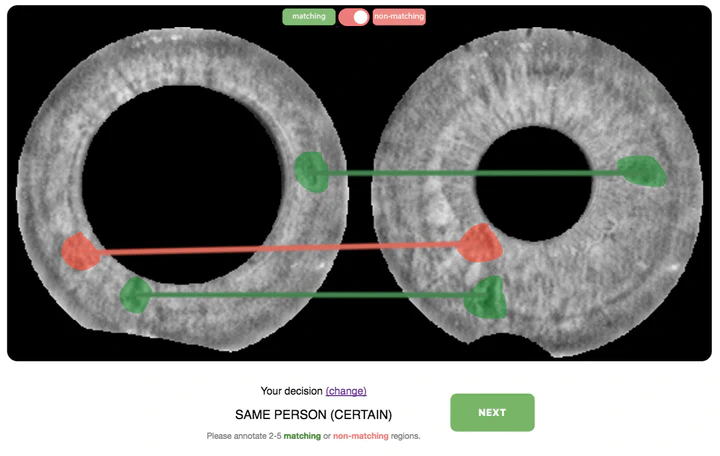Performance of Humans in Iris Recognition: The Impact of Iris Condition and Annotation-Driven Verification

Abstract
This paper advances the state of the art in human examination of iris images by (1) assessing the impact of different iris conditions in identity verification, and (2) introducing an annotation step that improves the accuracy of people’s decisions. In a first experimental session, 114 subjects were asked to decide if pairs of iris images depict the same eye (genuine pairs) or two distinct eyes (impostor pairs). The image pairs sampled six conditions: (1) easy for algorithms to classify, (2) difficult for algorithms to classify, (3) large difference in pupil dilation, (4) disease-affected eyes, (5) identical twins, and (6) post-mortem samples. In a second session, 85 of the 114 subjects were asked to annotate matching and non-matching regions that supported their decisions. Subjects were allowed to change their initial classification as a result of the annotation process. Results suggest that: (a) people improve their identity verification accuracy when asked to annotate matching and non-matching regions between the pair of images, (b) images depicting the same eye with large difference in pupil dilation were the most challenging to subjects, but benefited well from the annotation-driven classification, (c ) humans performed better than iris recognition algorithms when verifying genuine pairs of post-mortem and disease-affected eyes (i.e., samples showing deformations that go beyond the distortions of a healthy iris due to pupil dilation), and (d) annotation does not improve accuracy of analyzing images from identical twins, which remain confusing for people.